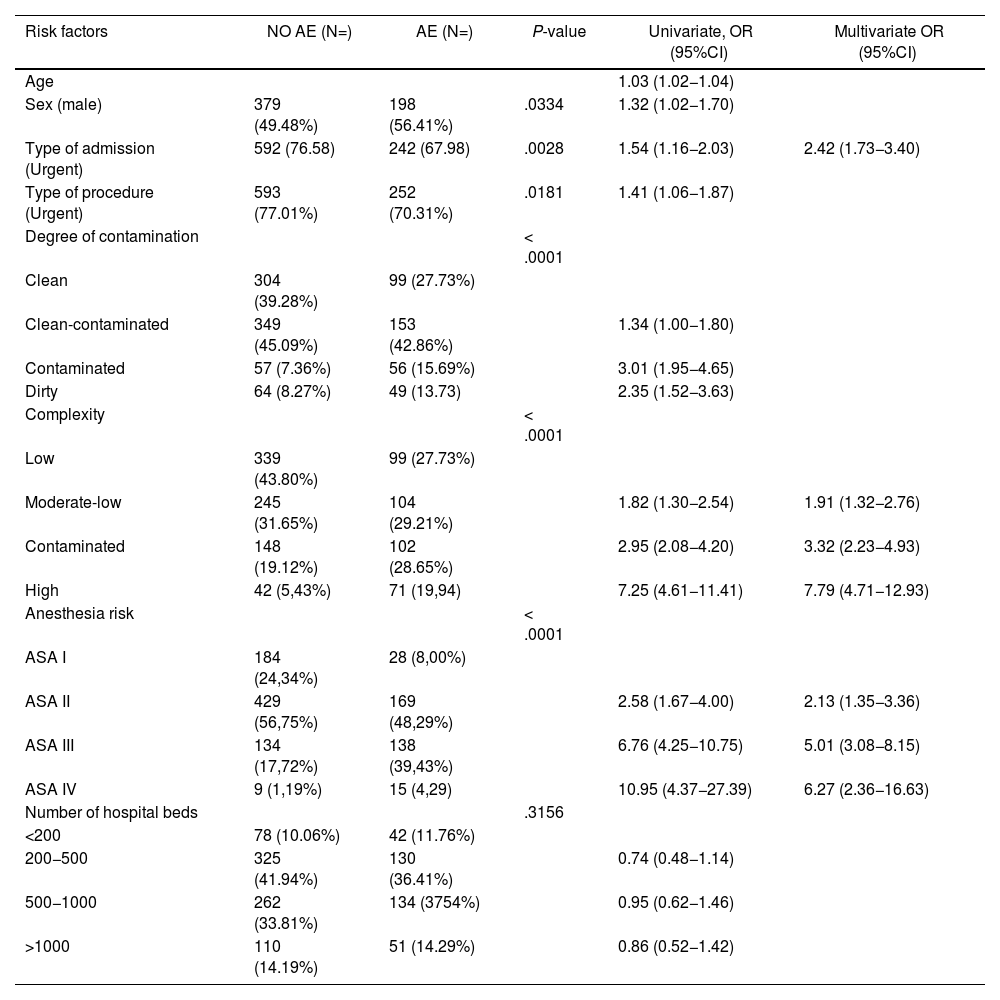Knowledge of adverse events (AE) in acute care hospitals is a particularly relevant aspect of patient safety. Its incidence ranges from 3% to 17%, and surgery is related to the occurrence of 46%–65% of all AE.
Material and methodsAn observational, descriptive, retrospective, multicenter study was conducted with the participation of 31 Spanish acute-care hospitals to determine and analyze AE in general surgery services.
ResultsThe prevalence of AE was 31.53%. The most frequent types of AE were infectious (35%). Higher ASA grades, greater complexity and urgent-type admission are factors associated with the presence of AE. The majority of patients (58.42%) were attributed a category F event (temporary harm to the patient requiring initial or prolonged hospitalization); 14.69% of AE were considered severe, while 34.22% of AE were considered preventable.
ConclusionsThe prevalence of AE in General and GI Surgery (GGIS) patients is high. Most AE were infectious, and the most frequent AE was surgical site infection. Higher ASA grades, greater complexity and urgent-type admission are factors associated with the presence of AE. Most detected AE resulted in mild or moderate harm to the patients. About one-third of AE were preventable.
El conocimiento de los eventos adversos (EA) en los hospitales de agudos es un aspecto de especial relevancia en la seguridad del paciente. Su incidencia oscila entre un 3%–17% y la cirugía se relaciona con la aparición de entre un 46%–65% de todos los EA.
Material y métodosSe realiza un estudio observacional, descriptivo, retrospectivo y multicéntrico, con la participación de 31 hospitales de agudos españoles, para la determinación y análisis de los EA en los Servicios de cirugía general.
ResultadosLa prevalencia de EA fue del 31,53%. Los tipos de EA más frecuentes fueron de tipo infeccioso (35%). Los pacientes con mayores grados de ASA, mayor complejidad y un tipo de ingreso urgente son factores asociados a la presencia de EA. A la mayoría de los pacientes se les atribuyó una categoría de daño F (daño temporal al paciente que requiera iniciar o prolongar la hospitalización) (58,42%). El 14,69% de los EA se considerados graves. El 34,22% de los EA se consideraron evitables.
ConclusionesLa prevalencia de EA en pacientes de CGAD es elevada. La mayor parte de los EA fueron de tipo infeccioso. El EA más frecuente fue la infección de herida o sitio quirúrgico. Los pacientes con mayores grados de ASA, mayor complejidad y un tipo de ingreso urgente son factores asociados a la presencia de EA. La mayoría de los EA detectados han supuesto un daño leve o moderado sobre los pacientes. Alrededor de un tercio de EA fueron evitables.














